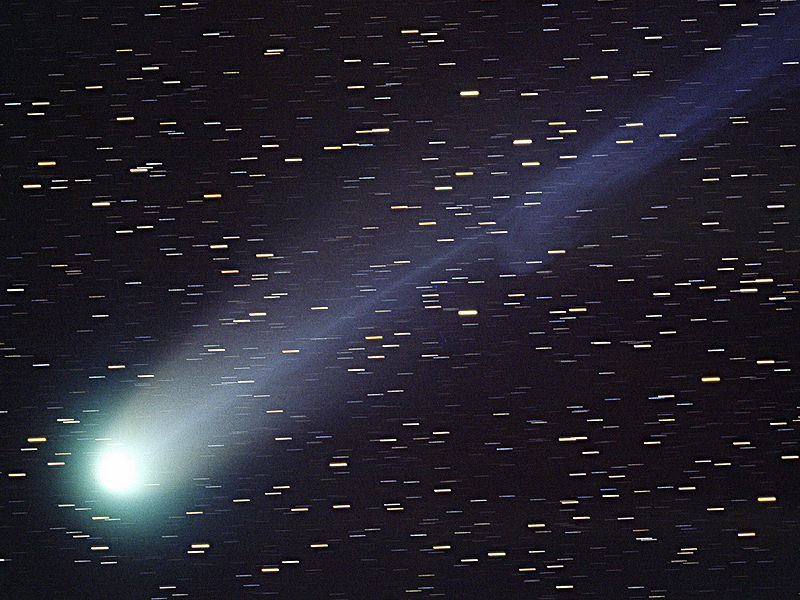I think it would be noticeably brighter near the centerChris Peterson wrote:
I don't think that our galaxy from the LMC would look all that different than it does from here, in terms of brightness.
The main difference would be the shape of the galaxy, and the sort of structure that would be apparent.
though I do agree that the main difference would be it's awesome structure.
It would be comparable to a near earth great comet of magnitude -2
(i.e., 6 times the brightness of Hyakutake at maximum brightness).
It would dominate the sky in a spectacular fashion.
http://en.wikipedia.org/wiki/Comet_Hyakutake wrote: <<Hyakutake became visible to the naked eye in early March 1996. By March 24, the comet was one of the brightest objects in the night sky, and its tail stretched 35 degrees. The comet had a notably bluish-green colour. The closest approach occurred on 25 March. Hyakutake was moving so rapidly across the night sky that its movement could be detected against the stars in just a few minutes. Observers estimated its magnitude as around 0, and tail lengths of up to 80 degrees were reported. Its coma, now close to the zenith for observers at mid-northern latitudes, appeared approximately 1.5 to 2 degrees across.>>
